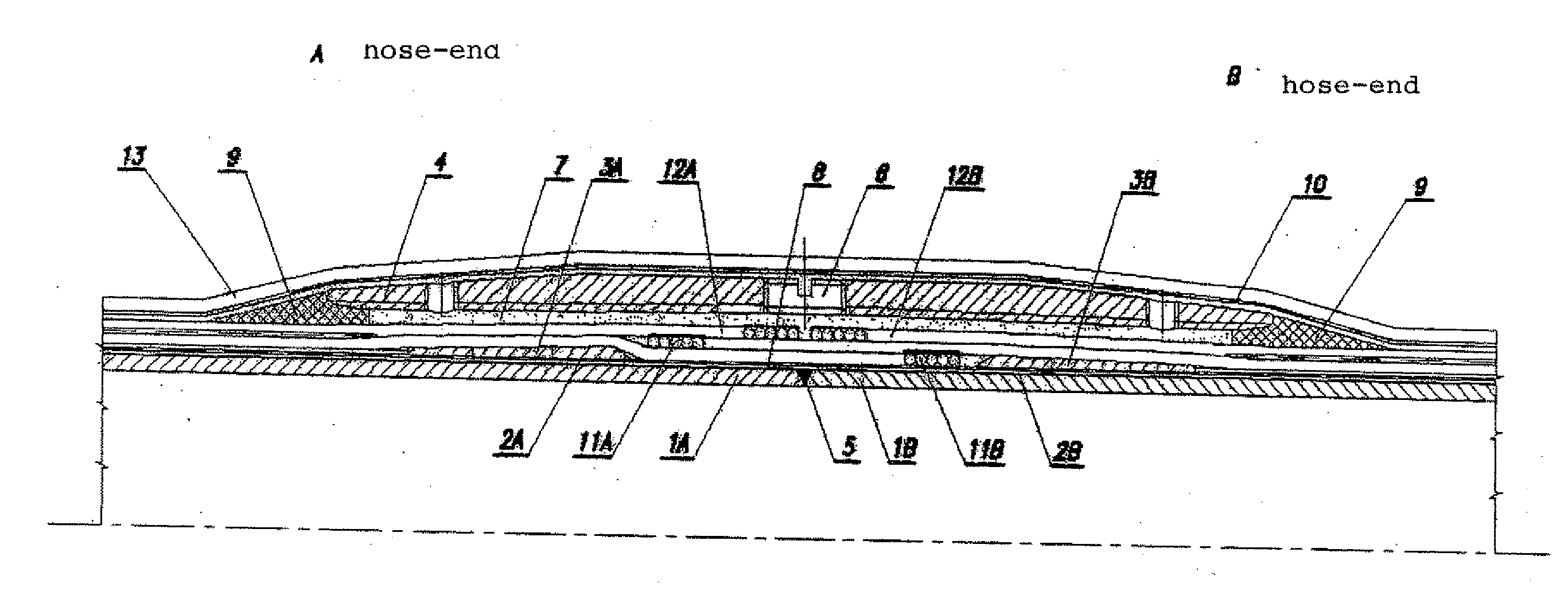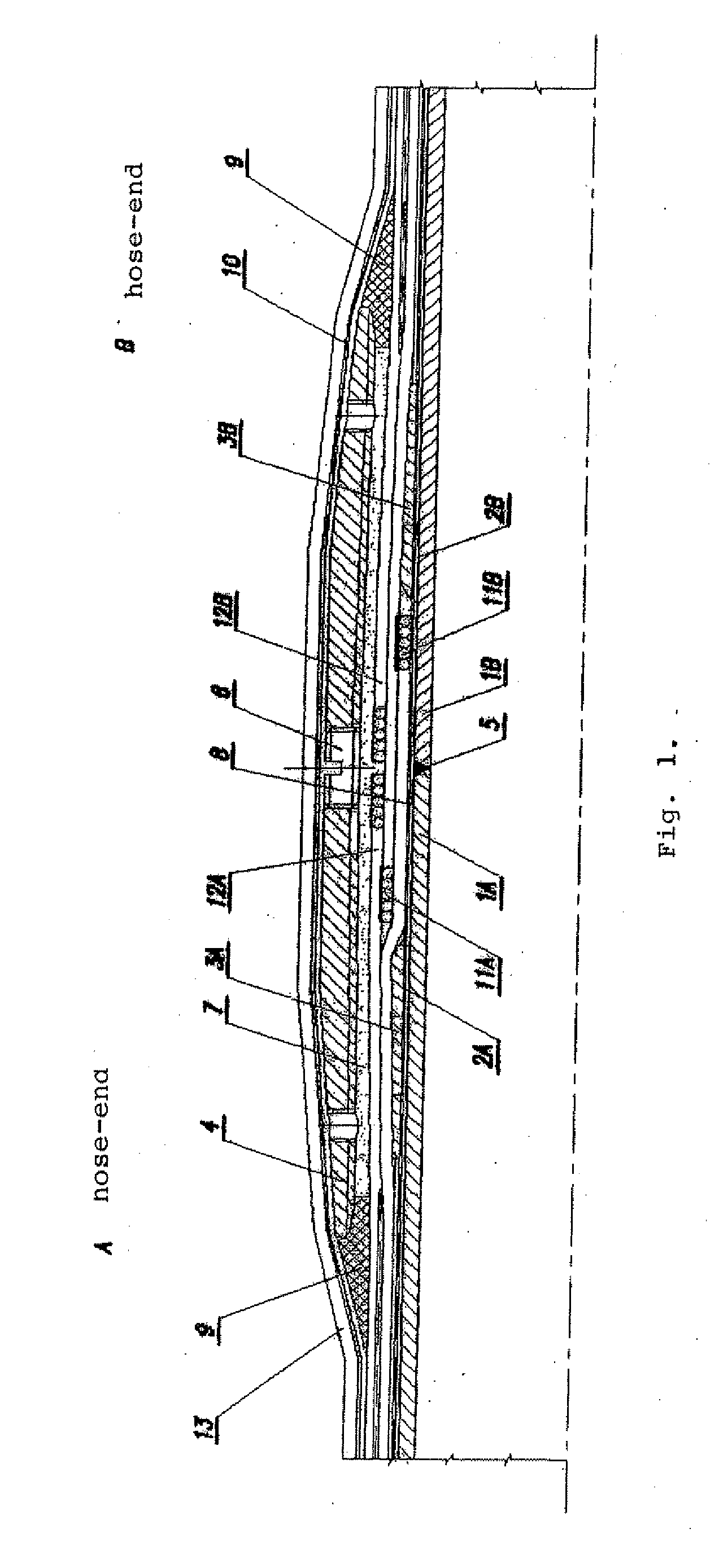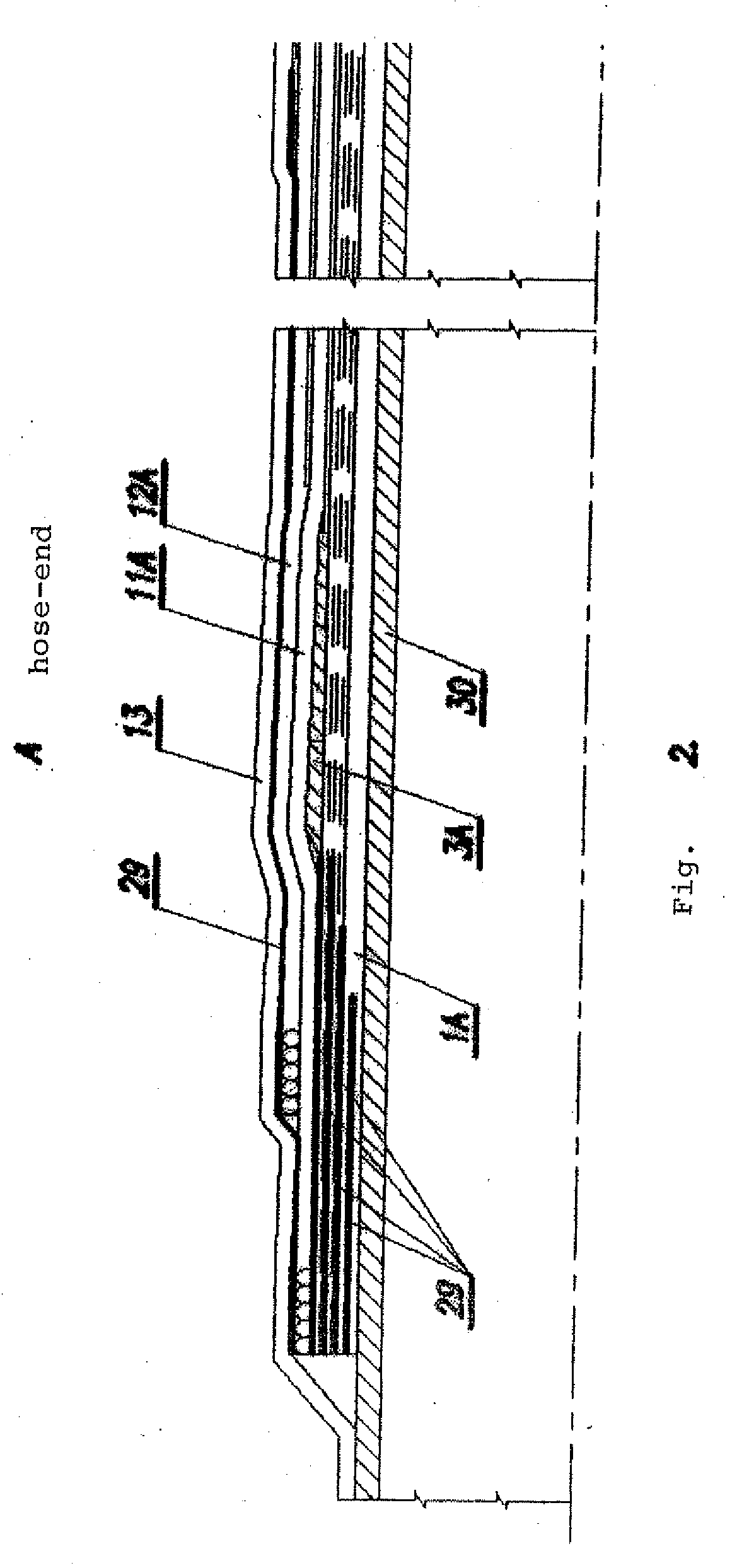Spliced long-length hose and method for splicing hoses
a technology of splicing hoses and hoses, which is applied in the direction of hose connections, rigid pipes, flexible pipes, etc., can solve the problems of not being able to lay such lines, the situation is often worse, and the formation of at least three potential leakage paths in the coupled hoses, so as to reduce the pressure bearing capacity of the hose line, the length of the built-in rigid section is minimal, and the effect of simple production
- Summary
- Abstract
- Description
- Claims
- Application Information
AI Technical Summary
Benefits of technology
Problems solved by technology
Method used
Image
Examples
example 1
[0042]Two rubber hoses with an inner diameter of 76 mm were built up. The hose liner 1 (liquid sealing layer) was made of rubber compound containing NBR. Load-distributing rubberized textile layers 2 were arranged above the liner. The hoses contained two reinforcing plies (cables) 11 and 12. A 70 mm long spiral cone 3 having a wall thickness increasing gradually from the direction of the hose-body up to 3.6 mm is built in under said reinforcing plies at the location of the splicing. The hoses were vulcanized on hose mandrel. The conical rigid outer sleeve 4, made of steel in this case, with an inner diameter flaring in an angle of 1° to the central point and with an inner surface formed circularly corrugated was pulled onto hose A. The splicing was carried out on hose mandrel, liner-ends 1A, 1B, were spliced with uncured rubber compound 5, and load-distributing rubberized textiles 2A, 2B were joined by using unvulcanized load-distributing textile 8 after folding back the reinforcing...
example 2
[0044]Bonded rubber hoses with four cable plies were spliced. The spliced section is shown in FIG. 3. The hoses had an inner diameter of 103.5 mm. The innermost layer of the hoses was an inner flexible stripwound 25 of stainless steel ending in a threaded sleeve 26. At the end of hose A there was a right-hand thread, at the end of hose B there was a left-hand thread. The hoses contained liquid sealing layer, liner 1, made of rubber compound based on synthetic rubber. Load-distributing rubberized textile layers 2 were placed above the liner 1. A spiral cone 3 with a length of 135 mm and with a wall thickness increasing gradually from the direction of the hose-body up to 4 mm is built in under the cables at the location of the to-be splicing. The upper (third and fourth) reinforcing cable plies 28A, 28B were bound at a distance of 20 mm from the inner end of the spiral cone 3 and the excess was cut. The hoses were vulcanized on hose mandrel. The conical rigid outer sleeve 4, made of s...
example 3
[0045]By means of FIG. 4 splicing of unbonded hoses with plastic liner and reinforced with steel profile 15, lower (first) flat steel ply 16, and upper (second) flat steel ply will be described. Distinction is made between hose A and hose B to be spliced. Plastic covers 24 of the hoses are cut back in a length as necessary. Fixing element 18, gullet-tooth fixing element, fixing element 20, and O-rings 21 protecting against outer moisture penetration are pulled onto the two hose-ends. Outer sleeve 22 is pulled onto one of the hoses. Flat steel plies 16, 17 are folded back. Steel profiles 15A, 15B and liners 1A, 1B are cut back on either hose by half of the intended overlapping of the flat steel plies 16, 17. The steel profile 15 is loosed and an inner sleeve 14 is pulled onto one of the hoses. The liner-ends 1A, 1B are welded. The inner sleeve 14 is pulled onto the welded liner, then steel profiles 15A, 15B are laid back from either side. The upper flat steel ply 16A of hose A, then ...
PUM
 Login to View More
Login to View More Abstract
Description
Claims
Application Information
 Login to View More
Login to View More - R&D
- Intellectual Property
- Life Sciences
- Materials
- Tech Scout
- Unparalleled Data Quality
- Higher Quality Content
- 60% Fewer Hallucinations
Browse by: Latest US Patents, China's latest patents, Technical Efficacy Thesaurus, Application Domain, Technology Topic, Popular Technical Reports.
© 2025 PatSnap. All rights reserved.Legal|Privacy policy|Modern Slavery Act Transparency Statement|Sitemap|About US| Contact US: help@patsnap.com



